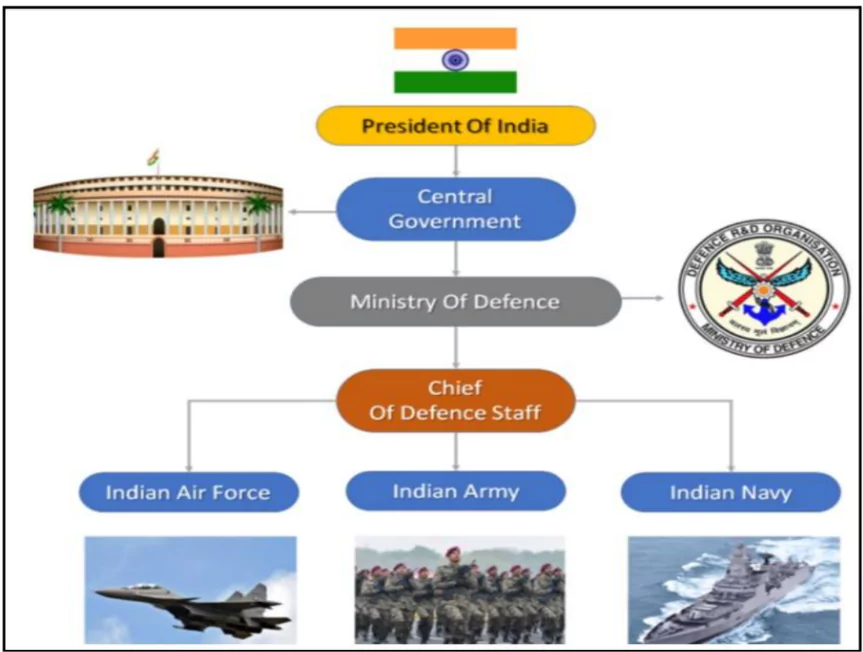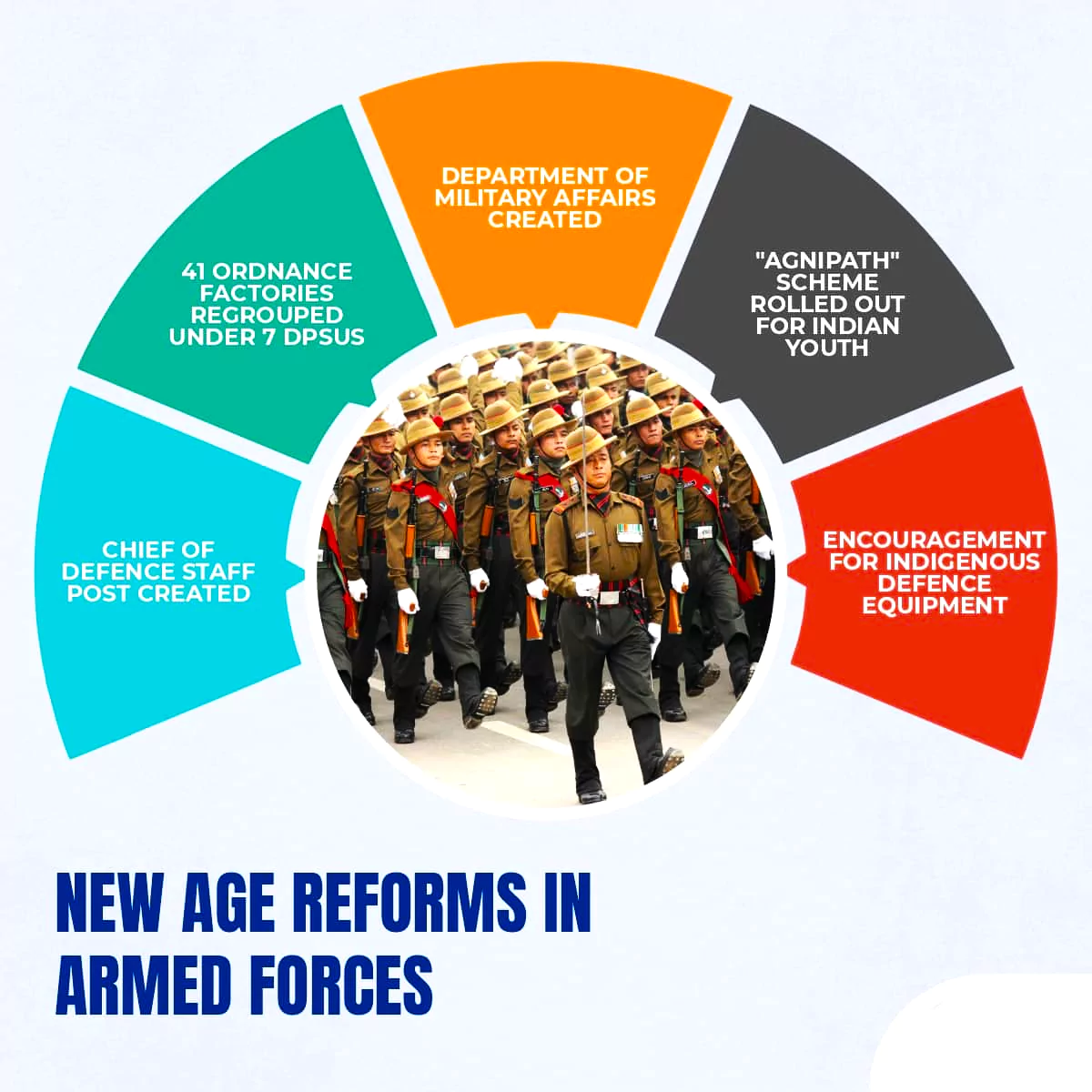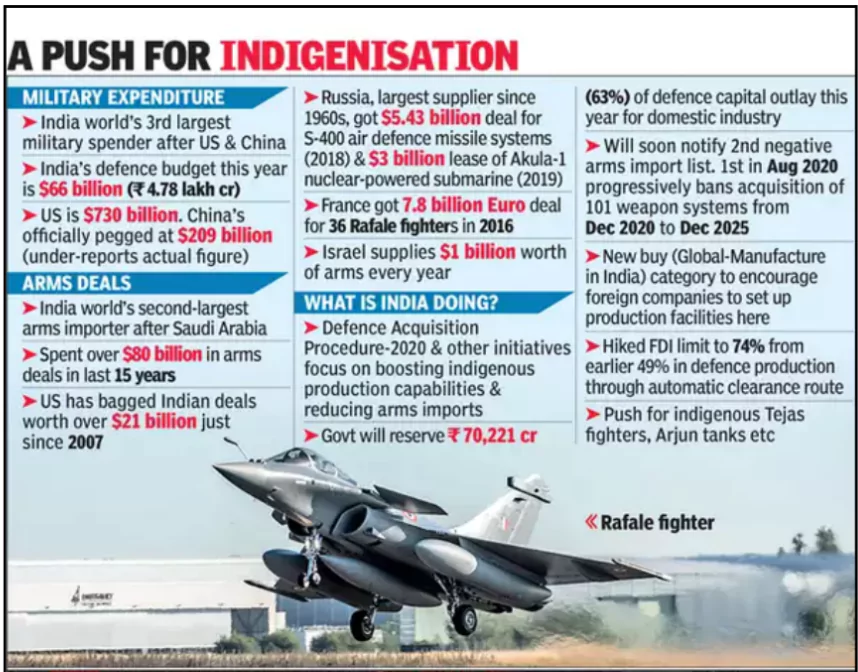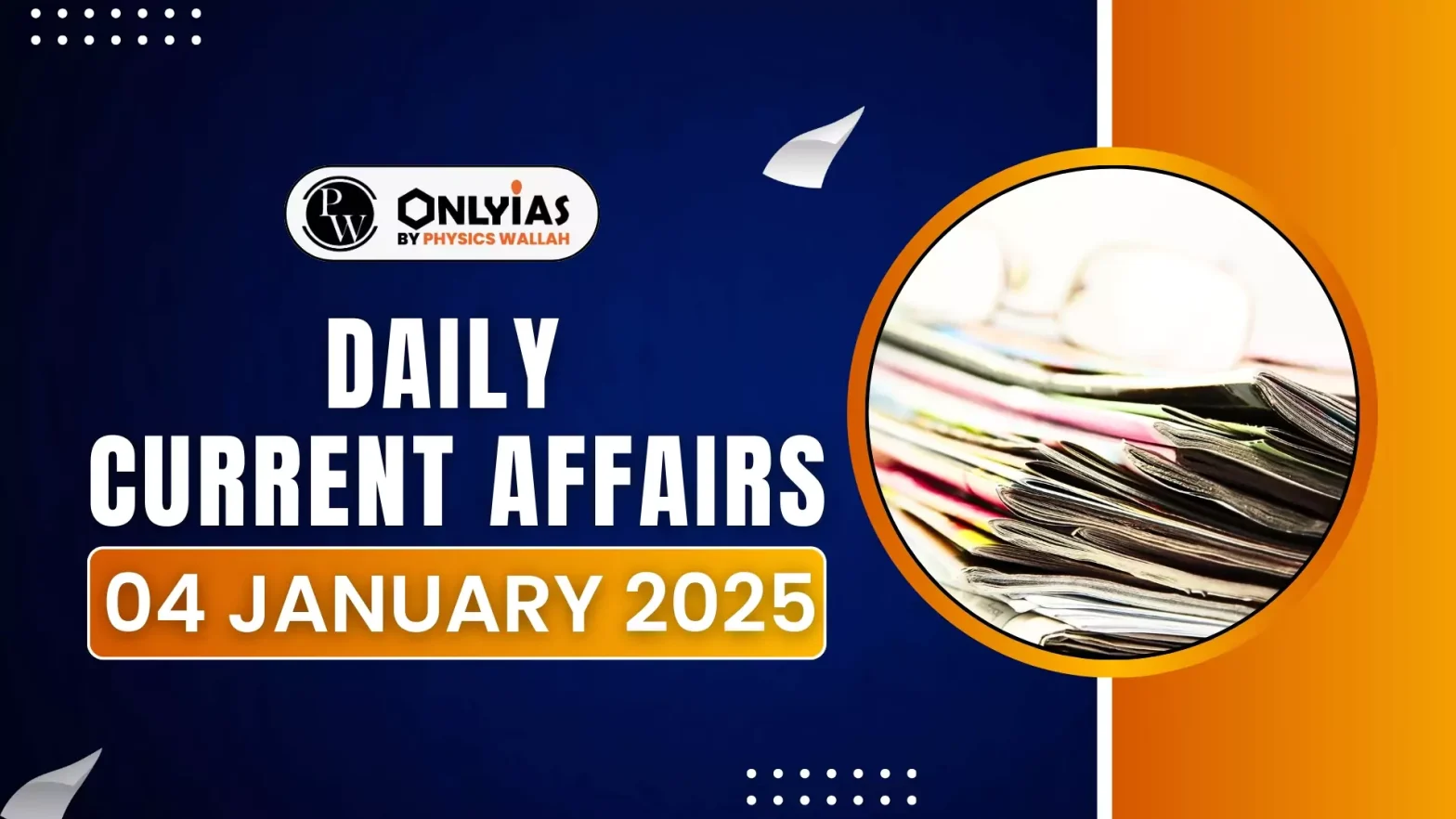Recently, The Ministry of Defence (MoD) decided to observe 2025 as the ‘Year of Reforms’
- Aim: To transform the Armed Forces into a technologically-advanced combat-ready force capable of multi-domain integrated operations.
About Integrated Theatre Commands
- Integrated Theatre Commands (ITCs) are a proposed military organizational structure in India that would bring together forces from the Army, Navy, and Air Force under a single commander for specific geographical areas or operational responsibilities.
- Commands & Headquarters: The latest draft of the military envisions three adversary-based theater commands:
- Western theater command facing Pakistan, planned to be set up in Jaipur,
- Northern theater command facing China, planned to be set up in Lucknow.
- Maritime theater command for threats emanating from the Indian Ocean Region, it could be headquartered in Coimbatore.
|
Enroll now for UPSC Online Course
Key Focus Areas Identified for Reform
- Strengthen Jointness and Integration: Focus reforms on enhancing joint operations and integration initiatives, facilitating the establishment of Integrated Theatre Commands.
- Embrace Emerging Domains and Technologies: Prioritize advancements in domains like Cyber and Space, while harnessing technologies such as Artificial Intelligence, Machine Learning, Hypersonics, and Robotics. Foster Inter-Service Cooperation: Promote a shared understanding of operational requirements and joint capabilities through coordinated inter-service training and collaboration.
- Streamline Acquisition Processes: Simplify and expedite acquisition procedures to ensure timely and effective capability development.
- Promote Technology Transfer and Public-Private Partnerships: Encourage collaboration between the defence sector and civil industries by enabling smoother technology transfer and fostering public-private partnerships.
- Enhance Stakeholder Collaboration: Break down silos within the defence ecosystem, improve civil-military coordination, eliminate inefficiencies, and optimize resource utilization.
- Position India as a Defence Exporter: Establish India as a reliable exporter of defence products by fostering R&D and forging partnerships with foreign Original Equipment Manufacturers for knowledge exchange and resource integration.
- Focus on Veteran Welfare: Optimize welfare measures for veterans while leveraging their experience and expertise.
- Instil Cultural Pride and Global Standards: Cultivate pride in Indian culture and achievements, building confidence in meeting global standards through indigenous capabilities while adopting suitable best practices from modern militaries.

Structure of India’s Defence System
- President: Supreme Commander of the Armed Forces.
- Parliament: Authorizes defense expenditure and oversees military policies.
- Ministry of Defence: Manages and administers the armed forces.
- DRDO (Defence Research and Development Organisation): Conducts defense research and development.
- CDS (Chief of Defence Staff): Provides single-point military advice to the government.
- Indian Army: Land-based combat forces.
- Indian Navy: Naval operations and maritime security.
- Indian Air Force: Air and space power.
Status of India’s Defence Sector (2024)
- Defence Budget: Total allocation of ₹6,21,941 crore for 2024-25, comprising 13% of total government expenditure. Focus Areas of the current budget year are modernization, personnel welfare, and research & development.
- Global Rankings: Ranked 4th globally in Global Firepower Index 2024.
- Active Personnel: 1.49 million, with 1.17 million in reserve forces.
Check Out UPSC CSE Books From PW Store
Defence Production and Trade
- Turnover: Reached ₹1,087 billion (US$13.5 billion) in 2022-23.
- Exports: Surged to ₹210.83 billion (US$2.63 billion) in 2023-24, a 21-fold increase over the last decade.
- Export saw a shift towards exporting critical systems like missiles(Brahmos) , warships, and radars.
- Key Export Destinations: Southeast Asia, Africa, and Middle Eastern countries.
- Imports: Primarily sourced from Russia, France, Israel and the U.S.
- As per SIPRI recent report , between 2019 and 2023, the biggest defense exporter to India was Russia, with 36 percent of the period’s total defense import. It was followed by France with 33 percent.
 Foreign Direct Investment (FDI):
Foreign Direct Investment (FDI): -
- Policy: FDI cap raised to 74% (automatic route) and up to 100% (government route) for high-tech defence projects.
- Impact: Encouraged global partnerships with OEMs and advanced technology transfer.
Evolution of Defence Reforms in India
- Post-Independence Era (1947-1961)
- Democratic Civilian Control: Civilian authority was firmly established through governance frameworks, ensuring democratic oversight of the armed forces.
- Challenges: Heavy reliance on imports and limited domestic defence capabilities marked this period.
- Reorganization After 1962 War Structural Adjustments: Strengthened geographical commands and operational frameworks to enhance military readiness and response capabilities.
- Kargil War Reforms (1999-2001): Establishment of the Defence Intelligence Agency( 2002), tri-service commands, and Integrated Defence Staff to improve coordination, intelligence sharing, and joint operations.
Decade of New Age Reforms (2014-2024)
- CDS and DMA: Streamlined Service Coordination: The creation of the Chief of Defence Staff (CDS) and the Department of Military Affairs (DMA) in 2019 marked a significant step in fostering inter-service synergy.
- The CDS, as a single-point military advisor, ensures unified strategies across the Army, Navy, and Air Force, while the DMA focuses on streamlining decision-making and boosting indigenous capabilities.
- Agnipath Scheme: Launched in 2022, the Agnipath Scheme introduced short-term recruitment of “Agniveers” to rejuvenate the armed forces.
- It reduces long-term personnel costs while maintaining a youthful and skilled force, aligning HR practices with modern operational needs.
- Integrated Battle Groups (IBGs): IBGs are compact, mission-specific units capable of swift deployment and independent operations. Designed for agility and efficiency, they enhance the armed forces’ ability to respond to modern threats.
- DAP 2020: The Defence Acquisition Procedure (DAP) 2020 emphasizes self-reliance by banning the import of select items, boosting private sector involvement, and mandating high indigenous content in procurement.
- Ordnance Factories Grouped into DPSUs: In 2021, 41 ordnance factories were restructured into seven Defence Public Sector Undertakings (DPSUs) to improve autonomy, efficiency, and accountability.
- These DPSUs specialize in diverse areas such as munitions, vehicles, and military-grade equipment, enhancing India’s indigenous manufacturing capabilities.
- Improved Role of the Private Sector: Liberalisation of defence production in 2001 catalyzed private sector growth.
 Key players like Tata Group, L&T, and Mahindra now contribute significantly to transport aircraft, artillery systems, and missile technologies.
Key players like Tata Group, L&T, and Mahindra now contribute significantly to transport aircraft, artillery systems, and missile technologies.
- Focus on Indigenous Capabilities
- Major Indigenous Projects: Key achievements include the HTT-40 trainer aircraft, light combat helicopters, advanced radars, and warships.
- Positive Indigenisation Lists: Over 500 defence items have been banned from imports to encourage domestic manufacturing, fostering self-reliance.
- Role of iDEX in Innovation
- Promoting Startups: The Innovations for Defence Excellence (iDEX) initiative has engaged startups and MSMEs to innovate for defence needs.
- Support for R&D: Encouraged innovation in critical domains like AI, robotics, and hypersonics to align with modern warfare requirements.
- Defence Space Agency: Established in 2019 with an objective to secure national strategic objectives in space and integrate space capabilities into military operations.
Check Out UPSC NCERT Textbooks From PW Store
Need for Reforms in the Defence Sector
- Dependence on Imports: India remains one of the largest arms importers, accounting for 9.8% of global imports (2019-23).
- Over 58% of defence procurement relies on foreign firms, highlighting the need for indigenous manufacturing to reduce dependency.
- New Age Security Threats: Emerging challenges like cyber warfare, space-based threats, and drones demand modernization of technologies, such as AI and quantum communication. China’s advancements in civil-military fusion further necessitate reforms.
- Logistic Challenges: Inefficiencies in supply chains impact operational readiness. For instance, during the 2020 Galwan clash, delays in delivering essential equipment exposed logistical gaps.
- Low Defence Budget: India’s defence budget for FY 2024-25 is $76 billion, significantly lower than the U.S. ($877 billion) and China ($292 billion), restricting modernization and R&D investments.
- Delays in Procurement: Bureaucratic processes often delay acquisitions, such as the Rafale deal, finalized after years of negotiations, impacting combat preparedness.
- Delays in Appointments: The absence of a Chief of Defence Staff (CDS) for nearly 10 months post-Gen Bipin Rawat’s demise hampered reforms.
- Personnel Living Conditions: Many soldiers face subpar living facilities, especially in high-altitude regions like Ladakh, affecting morale.
- Veterans’ Issues: Delayed pensions and limited job opportunities post-retirement highlight gaps in welfare schemes for ex-servicemen.
Challenges in Bringing Reforms to the Defence Sector
- Fiscal Burden: Limited budgetary allocations strain the ability to modernize infrastructure, scale domestic production, and invest in cutting-edge technology while balancing operational costs.
- Lack of Innovation: Insufficient focus on advanced R&D and dependency on foreign technologies hinder the development of indigenous critical components and high-tech equipment.
- Hurdles in Procurement: Bureaucratic red tape and inefficiencies in the defence acquisition process lead to delays in decision-making, production, and deployment of essential systems.
- Resistance to Reforms: Political opposition and inter-service disagreements, such as concerns over integrated theatre commands (ITCs), slow the implementation of crucial structural changes.
- Export Limitations: Defence PSUs struggle to compete internationally, while the private sector largely exports components instead of complete systems, limiting India’s global market footprint.
- Emerging Technology Adoption: Challenges in integrating new technologies like AI, 5G/6G, and quantum systems require robust policies and significant investments to remain competitive globally.
- Low Private Sector Participation: Although , the share of the private sector has significantly increased in recent years but it is still only 22% of India’s total defence sector production in FY 2024.
Key Government Initiatives to Boost Defence Production
| Initiative |
Details and Impact |
| Positive Indigenization Lists |
Five lists (509 service items, 5,012 DPSU items) with import embargo timelines, boosting self-reliance and indigenous manufacturing. |
| Defence Industrial Corridors |
Established in Uttar Pradesh and Tamil Nadu, attracting ₹21,000 crore in investment commitments. |
| SRIJAN Portal |
Facilitates indigenization by enabling MSMEs and industries to manufacture defence components. |
| Defence Acquisition Procedure |
Prioritizes domestic procurement, increasing the role of Indian industries in defence manufacturing. |
| Public Procurement Preference |
Implemented to ensure higher procurement from Indian firms, supporting local manufacturing industries. |
| Simplified Licensing Process |
Streamlined with longer validity periods, enhancing ease of doing business in defence manufacturing. |
| Opening of Defence R&D |
Encourages private industry and startups to collaborate, driving innovation and advanced technology development in the defence sector. |
Way Forward for Defence Reforms
- Boost Indigenous Manufacturing: Strengthen Make in India initiatives by expanding the Positive Indigenisation List and fostering PPPs.
- Programs like iDEX are a welcome step in this direction.
- Streamline Procurement: Implement a faster Defence Acquisition Procedure (DAP) to address bureaucratic delays.
- Develop digital platforms for real-time tracking and approvals.
- Enhance Budget Allocation: Gradually increase the defence budget to bridge gaps in modernization and R&D.
- Focus on critical areas like AI, hypersonics, and quantum technologies.
- Strengthen Veterans’ Welfare: Optimize pension schemes and provide reskilling opportunities for post-retirement careers.
- Enhance living conditions, especially in high-altitude regions.
- Modernize Training and Integration: Expedite the creation of Integrated Theatre Commands for joint operational efficiency.
- Incorporate emerging tech like AI and robotics into training modules.
- Implementation of Committees Report: By complete implementation of Raksha Mantri Committee report 2022, many of the issues regarding jointness, modernisation , litigation and Grievance redressal ,etc can be addressed .
Enroll now for UPSC Online Classes
Conclusion
India’s declaration of 2025 as the ‘Year of Reforms’ signals a renewed commitment to transforming its defence sector. By addressing longstanding challenges and embracing innovation, the government aims to achieve self-reliance and global competitiveness. Through these reforms, India is poised to not only safeguard its security but also assert its position as a key player in the global defence ecosystem.
Additional Reading: Integrated Theatre Command
![]() 4 Jan 2025
4 Jan 2025


 Foreign Direct Investment (FDI):
Foreign Direct Investment (FDI):  Key players like Tata Group, L&T, and Mahindra now contribute significantly to transport aircraft, artillery systems, and missile technologies.
Key players like Tata Group, L&T, and Mahindra now contribute significantly to transport aircraft, artillery systems, and missile technologies.